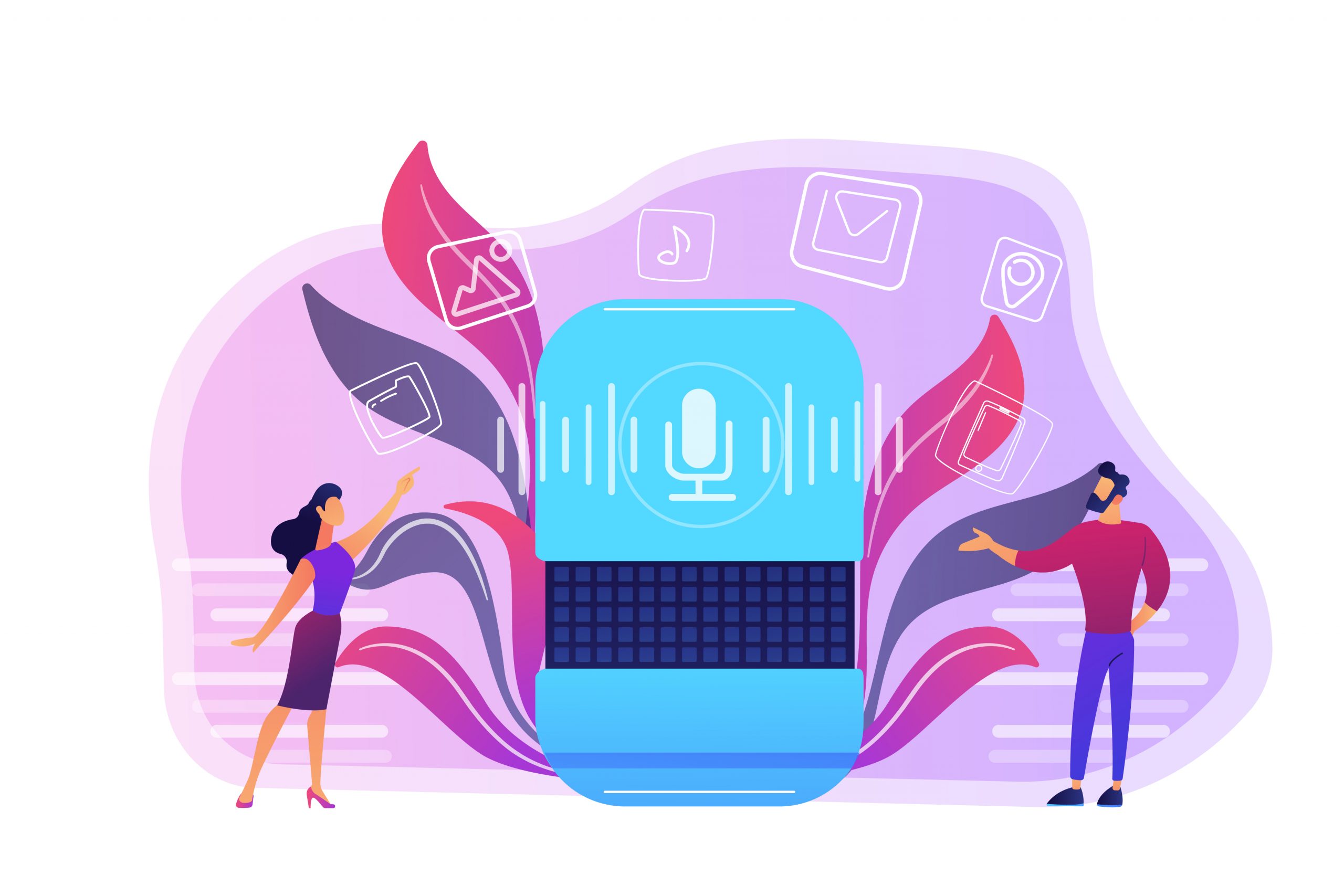Introduction
In recent times, the world has witnessed the gradual growth of voice technology, and businesses are actively leveraging the situation. The most prevalent use of voice AI are virtual voice assistants.
Voice assistants uses voice recognition, language processing algorithm and voice synthesis to listen to the users’ commands and provide them with relevant solutions, perform any task or provide information as required.
Voice assistants can be integrated into most devices, browsers, websites, social media and applications. With the growth of smartphones and IoT devices, the significance of voice assistants has also grown drastically.
With voice being the more relevant, convenient and practical part of life, people started preferring voice searches more than text searches. Undoubtedly, voice search and voice search optimisation have become an essential part of the digital world, and soon it will grow multifold.
Businesses today want innovative ways to comfort and provide the best experience to their customers throughout the customer journey, and voice assistants are an excellent feature for it. This article will explore how brands can leverage voice technology into their marketing strategy and how it is largely beneficial.
What are voice assistants?
Voice assistants are a type of virtual digital assistants which can understand human language and perform tasks based on spoken commands. Voice assistants uses AI, voice recognition technology, natural language processing and speech synthesis to respond to humans.
With AI, voice assistants synthesises the user’s message, breaks it down, evaluates it and offers the most relevant and meaningful response in return. There are broadly two categories of use cases of voice assistants – 1) general purpose voice assistants and 2) service-oriented voice assistants.
Voice assistants like Alexa, Google assistants, Siri, and Bixby belong to the general purpose category, where they can assist users in broad areas like playing music, controlling IoT devices, making a call, browsing information, etc.
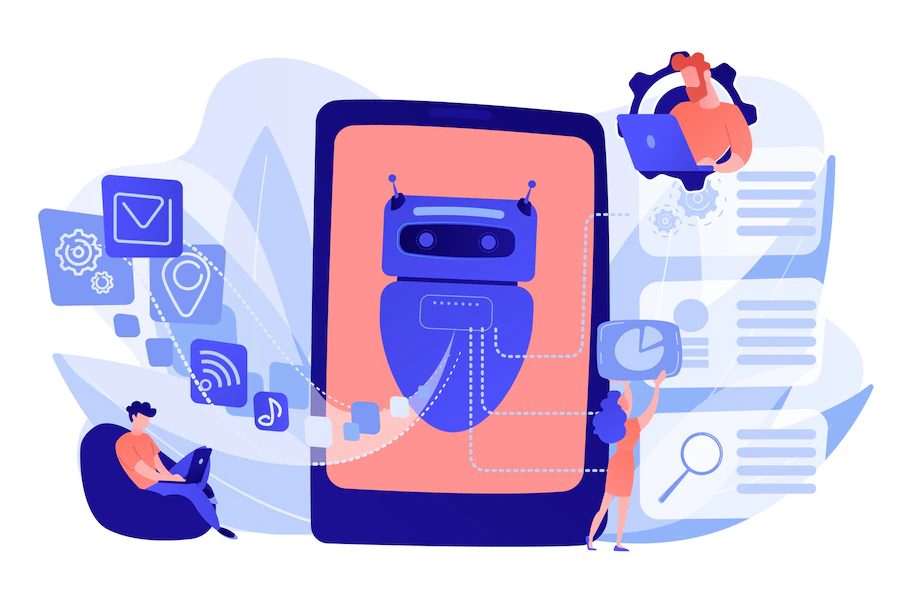
Conversely, the second category of voice assistants is the ones integrated with websites, apps or software to help their users navigate the service and support the customer journey. These voice bot assistants are trained according to the business purposes; for example, a fitness app with a voice assistant are trained to solve all the fitness-related queries and help users access their service.
Voice assistants can also be categorised based on their working style. Voice assistants that work through smart speakers are called passive listening devices, while other types of voice assistants integrated into apps, websites, or chatbots are touch or tap activated.
How do they work?
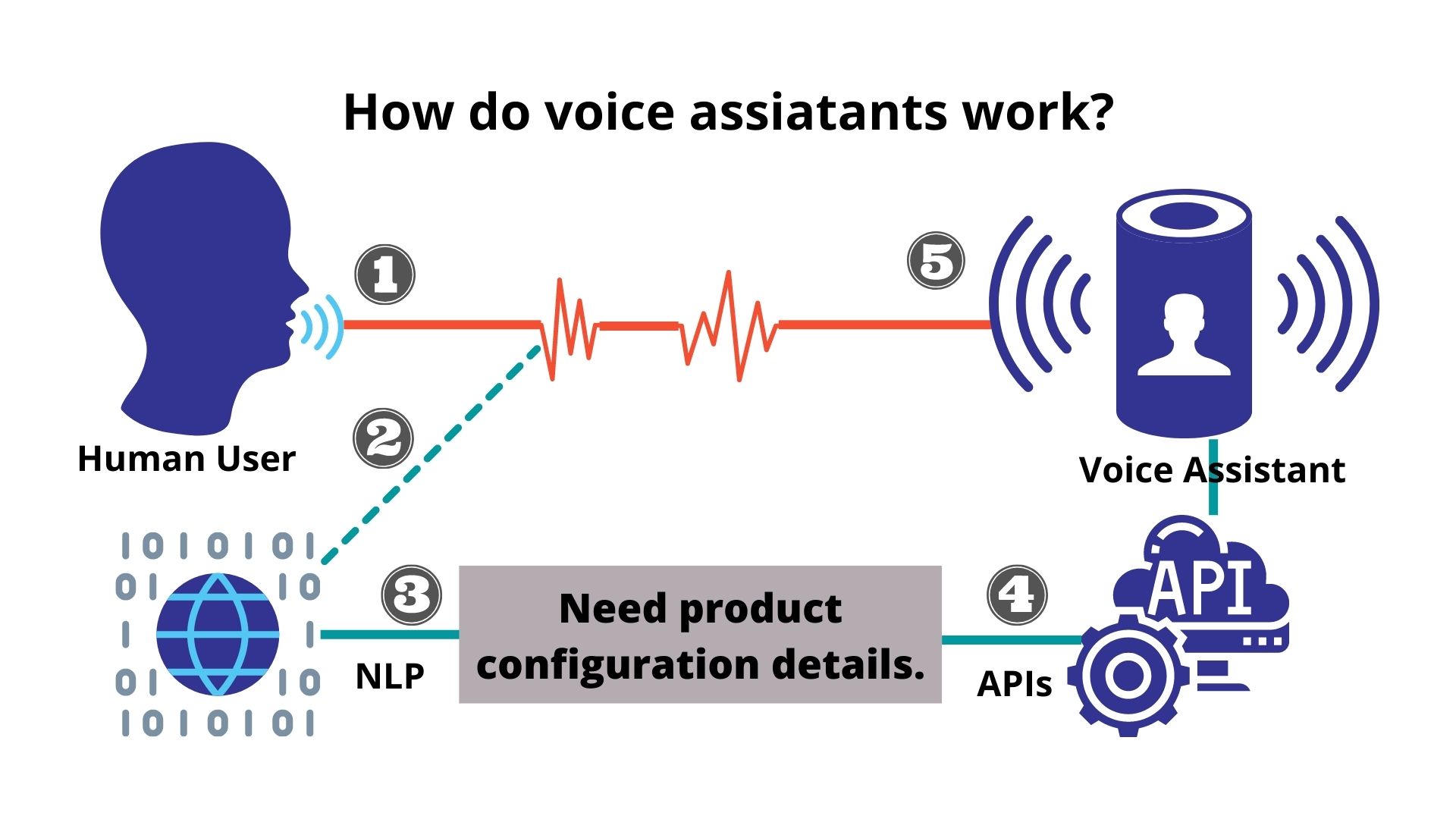
There are basically five major steps involved in the working process of voice bots.
1. Activating bots
When the devices are passive listeners, the bots will monitor the sounds in the surroundings, and they get activated immediately when they recognise the trigger words. While in touch and tap-activated voice assistants, the bots get activated when they receive the command after the touch or tap.
2. Voice Recognition
After the bot is activated, the command will pass through the voice recognition software, a subset of AI and deep learning. Here the sound vases are converted into understandable structured data for the Natural Language Processor (NLP) to process.
3. NLP in action
When the structured data gets processed through the NLP, the actual breakdown and understanding of the command will happen. NLP takes every aspect of human language into action, like context, user intent, accents, etc., to understand the command more precisely.
4. Information Retrieval
After processing the user’s commands using voice recognition and NLP, Voice assistants use APIs to retrieve information related to the command. The APIs will connect and access the knowledge base, which acts as a central repository to draw information. The knowledge keeps evolving over time. The larger and more organised the knowledge base, the more accurate and timely the voice assistant’s response.
5. Output
Once the information is gathered, the voice assistant will output the information through its programmed voice for the user.
All these processes happen in seconds, and it would be an understatement or oversimplification to just say that voice assistants hear human commands and hold a conversation with them.
Why should businesses invest in custom voice assistants?
A report by Statista claims that the global voice market size will grow from 10.7 billion USD in 2020 to 27.16 billion USD by 2026. And a report by google also shows that 27% of the global online population uses voice search on mobile. As mentioned earlier, voice assistants and voice searches are gradually growing and becoming essential to the digital lifestyle.
The use cases and applications of voice cases have grown from a mobile voice assistant which helps to perform tasks like calling, browsing the internet and playing music to many custom-made voice assistants on various websites and mobile applications. So, brands need to have their custom voice assistants who can guide and support their customers through their customer journey. With voice assistants, brands can build relationships with their customers, provide timely support and improve the user experience.
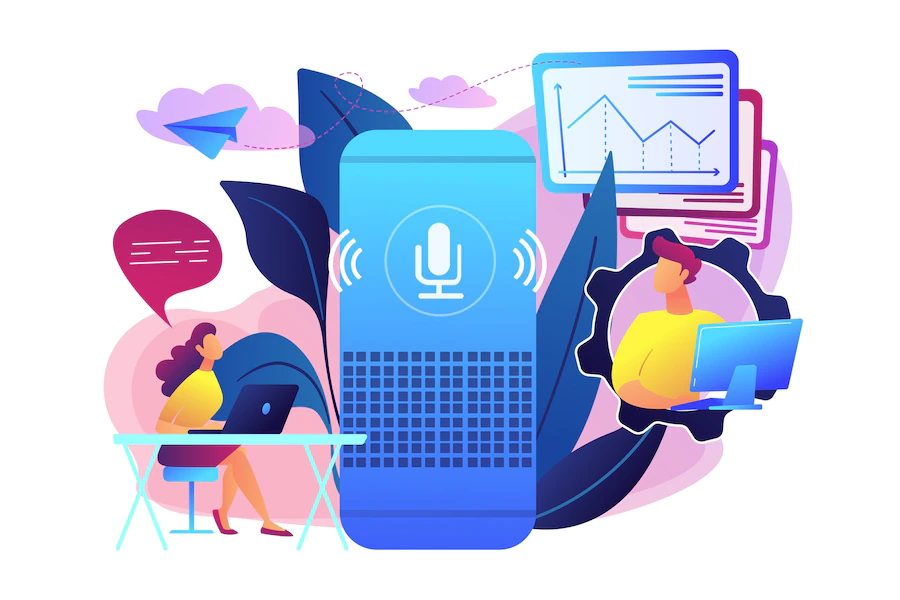
By leveraging the data gathered through the voice assistant, businesses can also enhance their analytics and understand their customers’ problems, expectations and preferences.
The custom branded voice assistants will carry the brand ideologies, marketing strategies and brand voice with every conversation they hold with the users. It will help provide a personalised voice experience, increase brand awareness, customer loyalty, customer retention, and improve sales efficiency.
Choosing a custom voice assistant
Businesses can choose between a white-label voice assistant or go for a fully-owned custom voice assistant. Both white label and fully-owned voice assistants have their own pros and cons.
White label voice assistants are built by partnering with large voice AI platform providers like Amazon Alexa or Google Assistant. Businesses can use their software and build their own voice assistant. White label voice assistants are highly cost and time-efficient solutions. It makes them the most suitable voice assistant solution.
While to have a fully-owned custom voice assistant, brands need to build the voice assistant from scratch. It is an extremely time consuming and complex process. It also calls for ample financial muscle and human resources. From building the bots, testing and training them to deploy them properly and checking their performance requires a rigorous process.
Many global brands and large business enterprises choose to deploy fully-owned branded voice assistants, as they want to hold the entire control over the customer data, data privacy & security and to enhance the brand experience.
Voice Assistants and Personalisation in marketing strategy
Global brands and large businesses are actively integrating voice technology and voice assistant into their marketing strategy. Furthermore, many businesses are likely to have separate in-depth voice marketing strategies, which include sonic branding, recorded audio content, voice assistants and voice search optimisation.
With the rapidly advancing SEO, brands need to incorporate plentiful recorded content and other voice-enabled technologies into their digital marketing strategies to support customers through verbal communication.
Three major ways voice assistants drive personalisation into marketing strategies
The blueprint for delivering a seamless customer journey lies in the businesses’ ability to know and understand their customer needs and expectations and enhance the user experience accordingly. Machine learning and NLP coupled with voice technology is a great feature that helps businesses to provide a personalised and customised tailored user experience. AI Voice assistants also promptly respond to behavioural changes and try to handle the situation.
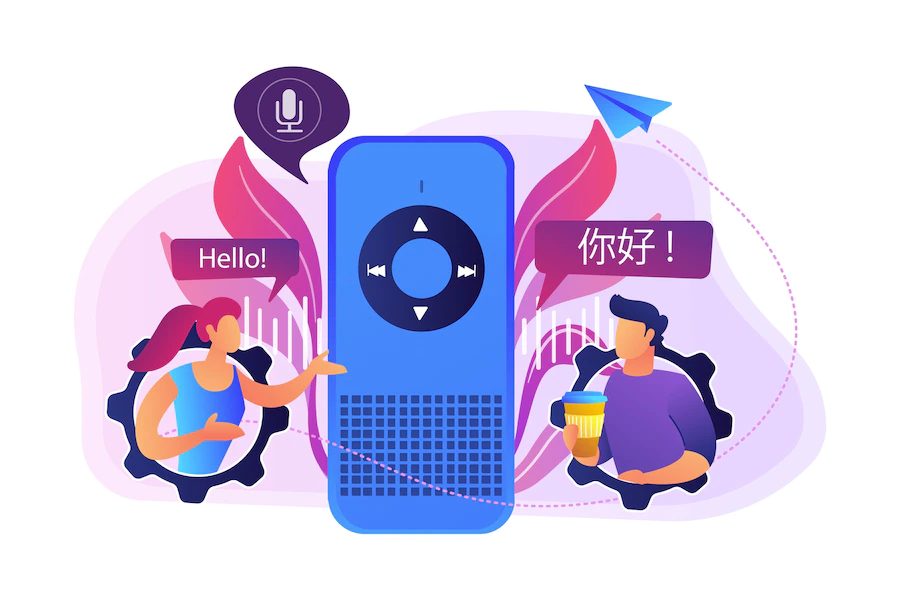
Personalisation of Marketing Campaigns and Advertisements
A fully-owned custom voice assistant will help businesses collect data that can be used to understand customer expectations.
With voice assistants, marketers can easily obtain behavioural and contextual data such as demographical information, what product users are mostly talking about, which service gets the least attraction, friction in understanding the brand, and what kind of platform or source users are using. Businesses can understand emerging trends from the data gathered.
Marketers can use all information to build personalised marketing/advertising strategies and campaigns. They can draft a campaign for the social media audience, while another personalised campaign for the official website and e-commerce sites. Marketers also can obtain real-time insights about the campaigns and make adequate changes accordingly to improve the performance.
Omnichannel voice marketing and customer journey
Voice assistants can be integrated into the businesses’ omnichannel marketing line-up. Once integrated, the voice assistant will start providing personalised solutions to the users across various platforms and also consistently monitor the customer journeys.
For example, if a user is accessing a voice assistant in a mobile app of a bus ticketing platform and looks for bus information. The same user shifts to the official website of the ticketing platform to book a ticket and uses the voice assistant on the website to confirm the booking; the voice assistant will already know which bus the user was looking for, what destination the person is headed to and other special requirements. Brands can seamlessly incorporate voice commerce into their custom voice assistant, paving the way for the most convenient and personalised user journey and experience.
Marketing and enterprise automation
Voice assistants can be integrated with most business and marketing software like resource management, CRM, HR systems, CMS, etc. They can analyse enterprise-specific vocabulary and drive intelligence from the integrated systems and provide answers to the users’ queries.
For example, in a hospital’s app, the user is getting the help of a voice assistant to book a virtual appointment. The voice assistant will check the doctor’s calendar and fix the consultation call as it will be integrated into the doctor’s calendar. When the consultation hour nears, a follow-up notification can also be set by the user for a reminder.
Voice assistants can connect with the email marketing system and trigger a reminder mail. In the same way, post the consultation, the user can make a fee payment through the voice assistant. Further, voice assistants can collect feedback and update the info in the CRM.
How Can DMG support businesses?
It is no doubt that custom voice assistants can help businesses develop a branded voice that fully echoes their brand identity and awareness. But it comes with many challenges like
- Data security and privacy concerns
- Cost of building, training, testing and deploying voice assistants
- Expert tech team and software developers
To overcome these challenges, you can partner with digitalisation partners like DMG, who will help you with building your custom-branded voice assistant seamlessly. DMG holds expertise in analysing, conceptualisation and creating voice assistants.
With our team of experienced programmers and developers, we have defined the process of building enterprise-level voice assistant solutions. We provide our extensive support from understanding the landscape of clients’ businesses, the need for voice assistants and selecting the right voice assistant platform to develop personalised fully-owned custom voice assistants, training and deploying them into your systems.
We also extend our support in the post-deployment phase in tracking, monitoring and auditing the voice assistant’s performance. We also provide consulting services to initially check on the need/requirement of a voice assistant, and also, we can provide maintenance services if you already have an effective voice assistant.
The final word
The increased use of voice searches shows how strong is the future of voice technology in business operations and marketing purposes. While large businesses already have voice marketing strategies in place, soon, other businesses will catch on the trend.
Voice assistance is the basic adaptation in voice technology. Voice assistants empower marketing, customer relationship and experience. Voice assistants manage to provide the most relatable and accurate solutions to customers’ needs in a unique and convenient way. This seamless user experience will help businesses to foster trust, reliability, transparency validation and control.
Are you skeptical about whether a voice assistant is necessary for your business? Contact us, and we will help you find your answers!
